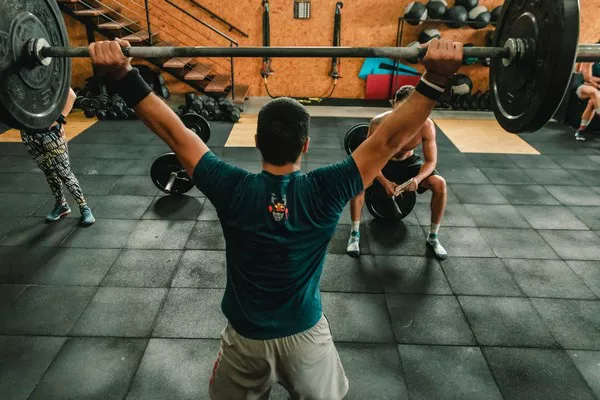Strength training is an essential component of a well-rounded fitness routine. It helps build muscle, increases bone density, enhances metabolism, and improves overall physical performance. While many individuals prefer hitting the gym for their strength training workouts, it is entirely possible to achieve significant results from the comfort of your home. In this article, we will explore the key aspects of strength training at home, including equipment, workout routines, safety measures, and nutrition tips, to help you embark on your fitness journey.
1. Benefits of Strength Training
Before delving into the specifics, let’s take a moment to understand the numerous benefits of strength training:
Muscle Growth and Strength: Strength training promotes the growth and development of muscles, leading to increased strength and improved functional abilities.
Fat Loss: Building lean muscle mass contributes to a higher metabolic rate, making it easier to burn calories and lose excess body fat.
Bone Density: Resistance exercises stimulate bone formation, reducing the risk of osteoporosis and improving bone health.
Enhanced Body Composition: Strength training helps sculpt your physique, creating a balanced and aesthetically pleasing body shape.
Mental Health: Engaging in regular strength training can reduce stress, anxiety, and symptoms of depression while boosting overall mood and self-confidence.
SEE ALSO: 8 Amazing Benefits of Exercise to Mental Health, According to Studies
2. Getting Started: Essential Equipment for Strength Training at Home
To set up a successful home strength training space, you don’t need a vast array of expensive equipment. Start with the following basic items:
Dumbbells: Adjustable dumbbells or a set of fixed-weight dumbbells provide versatile options for a wide range of exercises.
Resistance Bands: These portable and affordable bands offer adjustable resistance and are excellent for targeting different muscle groups.
Kettlebell: A single kettlebell allows for dynamic movements that engage multiple muscle groups simultaneously.
Pull-Up Bar: A sturdy pull-up bar installed on a doorway or mounted to a wall provides excellent upper body and core workout opportunities.
Exercise Mat: A comfortable and non-slip mat is essential for floor exercises and provides cushioning for your joints.
Stability Ball: A stability ball is perfect for improving balance and stability while working on core strength.
SEE ALSO: How to Do Strength Training Without Equipment: A Full Guide
3. Designing Your Home Strength Training Routine
Crafting an effective strength training routine at home involves planning and diversity. The goal is to target different muscle groups and allow sufficient rest for recovery. Consider the following tips:
Warm-Up: Always start with a proper warm-up to increase blood flow to your muscles and reduce the risk of injury. Perform dynamic stretches or light aerobic exercises for 5-10 minutes.
Compound Exercises: Focus on compound exercises that engage multiple muscle groups simultaneously. Examples include squats, lunges, push-ups, and rows.
Isolation Exercises: Incorporate isolation exercises to target specific muscles and enhance overall muscle balance. Bicep curls, tricep extensions, and calf raises are examples of isolation exercises.
Progressive Overload: Continually challenge your muscles by gradually increasing the weight or resistance. Progressive overload is essential for muscle growth and strength development.
Rest Days: Allow your muscles time to recover and grow by incorporating rest days into your weekly routine. Aim for at least 48 hours of rest before targeting the same muscle groups again.
SEE ALSO: Best at Home Strength Training: An Easy-to-Follow Guide
4. Safety Considerations for Strength Training at Home
Safety should be a top priority when engaging in strength training at home. Follow these guidelines to minimize the risk of injuries:
Proper Form: Focus on maintaining proper form during each exercise. Poor form can lead to injuries and diminish the effectiveness of the workout.
Start Slowly: If you’re new to strength training, begin with lighter weights and gradually increase the intensity as your strength and technique improve.
Warm-Up and Cool-Down: Always warm up before starting your workout and cool down afterward to prevent strains and reduce muscle soreness.
Consult a Professional: If you’re unsure about how to perform certain exercises, consider seeking guidance from a certified personal trainer.
Listen to Your Body: Pay attention to any signs of pain or discomfort during the workout. If something feels off, stop the exercise and rest.
5. Nutrition for Strength Training at Home
Proper nutrition plays a crucial role in supporting your strength training efforts. Follow these dietary tips to optimize your results:
Adequate Protein Intake: Protein is essential for muscle repair and growth. Include lean protein sources such as chicken, fish, tofu, beans, and lentils in your meals.
Balanced Diet: Consume a well-rounded diet that includes a variety of fruits, vegetables, whole grains, and healthy fats to ensure you’re getting all the necessary nutrients.
Hydration: Stay hydrated throughout the day, as water is vital for muscle function and recovery.
Pre- and Post-Workout Nutrition: Have a light snack containing carbohydrates and protein before your workout to fuel your exercise session. Afterward, refuel with a protein-rich meal to support muscle recovery.
Conclusion
Strength training at home can be just as effective as working out in a gym, provided you have the right equipment and a well-planned routine. The benefits of strength training extend far beyond just building muscle; it positively impacts various aspects of your physical and mental health. By following the guidelines outlined in this article, you can embark on a successful strength training journey in the comfort of your home and achieve your fitness goals. Remember to prioritize safety, proper nutrition, and consistency, and you’ll be well on your way to a stronger and healthier you.
FAQs
1. Can I achieve significant results with strength training at home compared to going to the gym?
Yes, you can achieve significant results with strength training at home. While gym facilities offer a wide range of equipment and professional guidance, a well-planned home workout routine with basic equipment like dumbbells, resistance bands, and a pull-up bar can be equally effective. Consistency, progressive overload, and proper nutrition are key factors in obtaining favorable outcomes.
2. Do I need to invest in expensive equipment for strength training at home?
No, you don’t need to invest in expensive equipment. Basic items like dumbbells, resistance bands, a kettlebell, and a stability ball are sufficient to perform a variety of exercises targeting different muscle groups. These are relatively affordable and offer a versatile range of workout options.
3. How often should I do strength training workouts at home?
The frequency of your strength training workouts will depend on your fitness level and goals. As a general guideline, aim for 2 to 4 sessions per week. Allow at least 48 hours of rest between working the same muscle groups to promote recovery and muscle growth.
4. I’m a beginner; where should I start with strength training at home?
If you’re a beginner, start with bodyweight exercises and lighter weights to familiarize yourself with proper form and technique. Gradually increase the intensity and complexity of your workouts as you gain confidence and strength. Consulting a personal trainer or using online resources for workout routines tailored to beginners can also be helpful.
5. Is it safe to do strength training at home without professional guidance?
While it’s generally safe to do strength training at home, seeking professional guidance can be beneficial, especially if you’re new to strength training. A certified personal trainer can teach you proper form, help create a personalized workout plan, and ensure that you’re performing exercises safely and effectively.
6. Can I build muscle with bodyweight exercises alone?
Yes, you can build muscle with bodyweight exercises alone. Bodyweight exercises like push-ups, squats, lunges, and planks can be highly effective in building strength and muscle. As your fitness level improves, you may consider incorporating additional resistance using equipment like dumbbells or resistance bands to continue challenging your muscles.
7. What should I eat before and after strength training at home?
Before your workout, opt for a light snack containing carbohydrates and a small amount of protein to provide energy for your exercise session. Afterward, aim for a meal rich in protein to support muscle recovery and growth. Additionally, stay hydrated throughout your workout and the day to support overall performance and recovery.
8. Can strength training at home help with weight loss?
Yes, strength training can aid in weight loss. Building lean muscle mass through strength training boosts your metabolism, helping you burn more calories throughout the day. Combined with a balanced diet and regular cardiovascular exercise, strength training can contribute to achieving your weight loss goals.
9. What if I don’t have much space at home for exercising?
Even if you have limited space, there are plenty of bodyweight exercises and exercises that require minimal equipment that can be done in small areas. Exercises like lunges, burpees, and bodyweight squats can be performed effectively in confined spaces. Additionally, adjustable dumbbells and resistance bands take up very little space and offer a wide range of workout options.
10. How long will it take to see results from strength training at home?
The time it takes to see noticeable results from strength training at home varies from person to person. Factors like workout consistency, intensity, nutrition, and individual fitness levels all play a role. Some individuals may start seeing improvements in strength and muscle definition within a few weeks, while others may take a bit longer. Stay patient and consistent, and the results will come.
[inline_related_posts title=”Related Topics” title_align=”left” style=”list” number=”3″ align=”none” ids=”1192,1144,1054″ by=”categories” orderby=”rand” order=”DESC” hide_thumb=”no” thumb_right=”no” views=”no” date=”yes” grid_columns=”1″ post_type=”” tax=””]


































